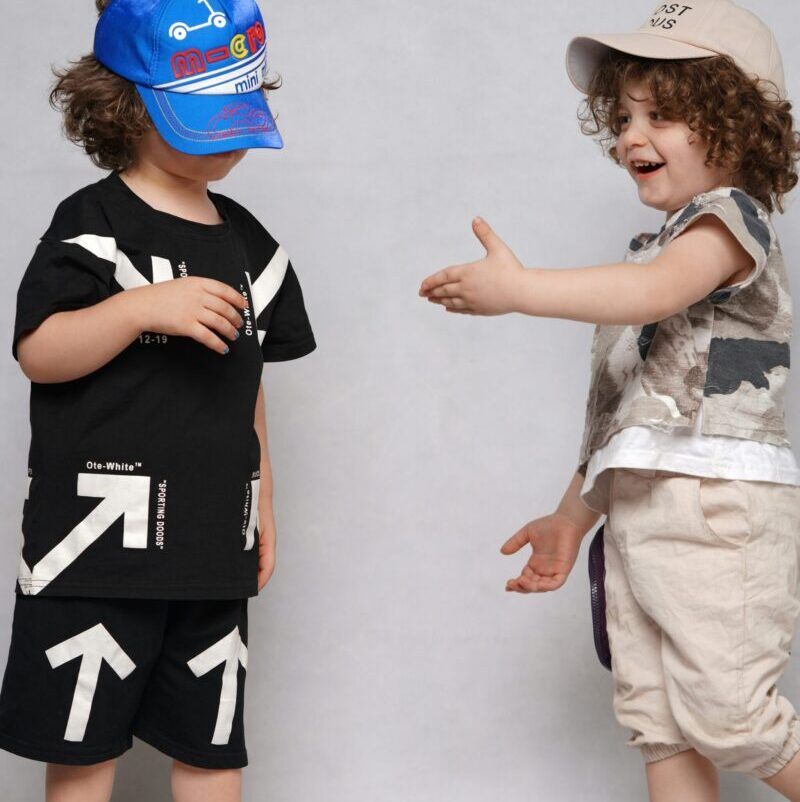From Zero to Collection: How to Quickly Plan Your First Kidswear Line
Launching a childrenswear line is exciting, but also overwhelming. Many aspiring designers and start-up brands get lost in the details: fabric choices, age groups, color palettes, sizing, and production logistics. The truth is, the most successful collections don’t start with dozens of scattered ideas—they begin with a clear plan and a structured approach to building a cohesive series.
At MK Kids, we’ve worked with emerging labels around the world who are making their very first steps into the market. What we’ve seen time and again is that a thoughtful plan can turn a scattered idea into a sellable collection that grows naturally with your brand. Here’s how to go from zero to your first complete childrenswear series.
Step 1: Define Your Core Concept
Before sketching a single garment, ask yourself: what story am I telling?
Children’s fashion works best when it connects to emotion—play, comfort, imagination, or everyday practicality. Are you focusing on playful prints for toddlers, or chic minimalism for older kids? Deciding on a central theme will guide every decision you make later, from colors to fabric weight.
A clear concept also ensures that your pieces look like they belong together, which is essential for a collection that resonates with both retailers and parents.
Step 2: Focus on a “Hero Piece”
Every collection needs a star. This is the product that captures attention online, looks great in photos, and becomes your brand’s entry point. For many new childrenswear manufacturers, this might be a jacket with a unique print, or a dress that’s easy to wear but visually striking.
Your hero piece will anchor the rest of the collection. Build supporting products—like tops, leggings, or accessories—around it. Think of these supporting products as the cast that makes your hero shine.
Step 3: Keep the Collection Tight
A common mistake for new labels is trying to design too many styles at once. The risk? Spreading yourself too thin, with high sampling costs and unfocused marketing.
Instead, aim for a small, well-balanced series:
- 1 hero product (the star of your collection)
- 2–3 supporting tops or bottoms
- 1 accessory or layering item
This compact structure not only keeps costs manageable but also makes it easier for customers to understand your brand at a glance.
Step 4: Think in Combinations
Parents love versatility. When items can be mixed and matched within a collection, they feel more valuable. Plan color palettes and silhouettes that connect naturally: a printed hoodie that pairs with solid leggings, or a skirt that works with both a casual tee and a dressier blouse.
This combination mindset helps you create “mini capsules” within your larger collection—small groupings of pieces that work together seamlessly.
Step 5: Balance Creativity and Commerciality
Your first collection should excite people, but it must also sell. That means balancing unique designs with essentials. For example, while you might want to experiment with bold prints, also include solid basics in complementary colors. Essentials help drive consistent sales and give parents easy buying options, while your more creative pieces build your brand identity.
Step 6: Plan for Scale
Even at the beginning, think ahead: how will this collection grow? When one of your designs becomes a bestseller, you’ll want the ability to reproduce it in different colors or sizes quickly. Working with a custom kids clothing manufacturer who understands scaling is crucial here. A strong partner will not only produce your current line but also help you adapt when demand increases.
Step 7: Tell the Story Online
A collection is more than clothes—it’s a narrative. Use your website and social media to show how your pieces fit into everyday life. Highlight the fabrics, the comfort, and the playful details that make your designs stand out. When parents can visualize their kids wearing your clothes in real life, conversion rates increase dramatically.
At MK Kids, we’ve seen that brands who invest in visual storytelling—through lookbooks, styled shoots, or even simple flat-lays—create stronger emotional connections with their audience.
Step 8: Learn and Adjust
Finally, remember that your first series is only the beginning. Treat it as a learning process. Collect feedback from customers, retailers, and even kids themselves. Track what sells best, and use those insights to refine your next collection.
The most successful childrenswear manufacturers understand that each line is both a product and an experiment. With every launch, you’ll gain sharper insight into what your audience wants—and your brand will grow stronger.
Final Thoughts
Creating your first childrenswear series doesn’t have to be overwhelming. Start small, stay focused, and think in terms of combinations and stories. With a clear plan, even a single “hero piece” can blossom into a full line that represents your vision.
At MK Kids, we believe every brand—no matter how new—has the potential to create collections that inspire. Your journey from zero to series is not just about clothing, but about building an identity that will carry your brand forward for years to come.
 +1 5618168645
+1 5618168645

 Admin
Admin




 No. 888 ZhuJiaWan Street, Gusu District, Suzhou City, Jiangsu Province, China
No. 888 ZhuJiaWan Street, Gusu District, Suzhou City, Jiangsu Province, China